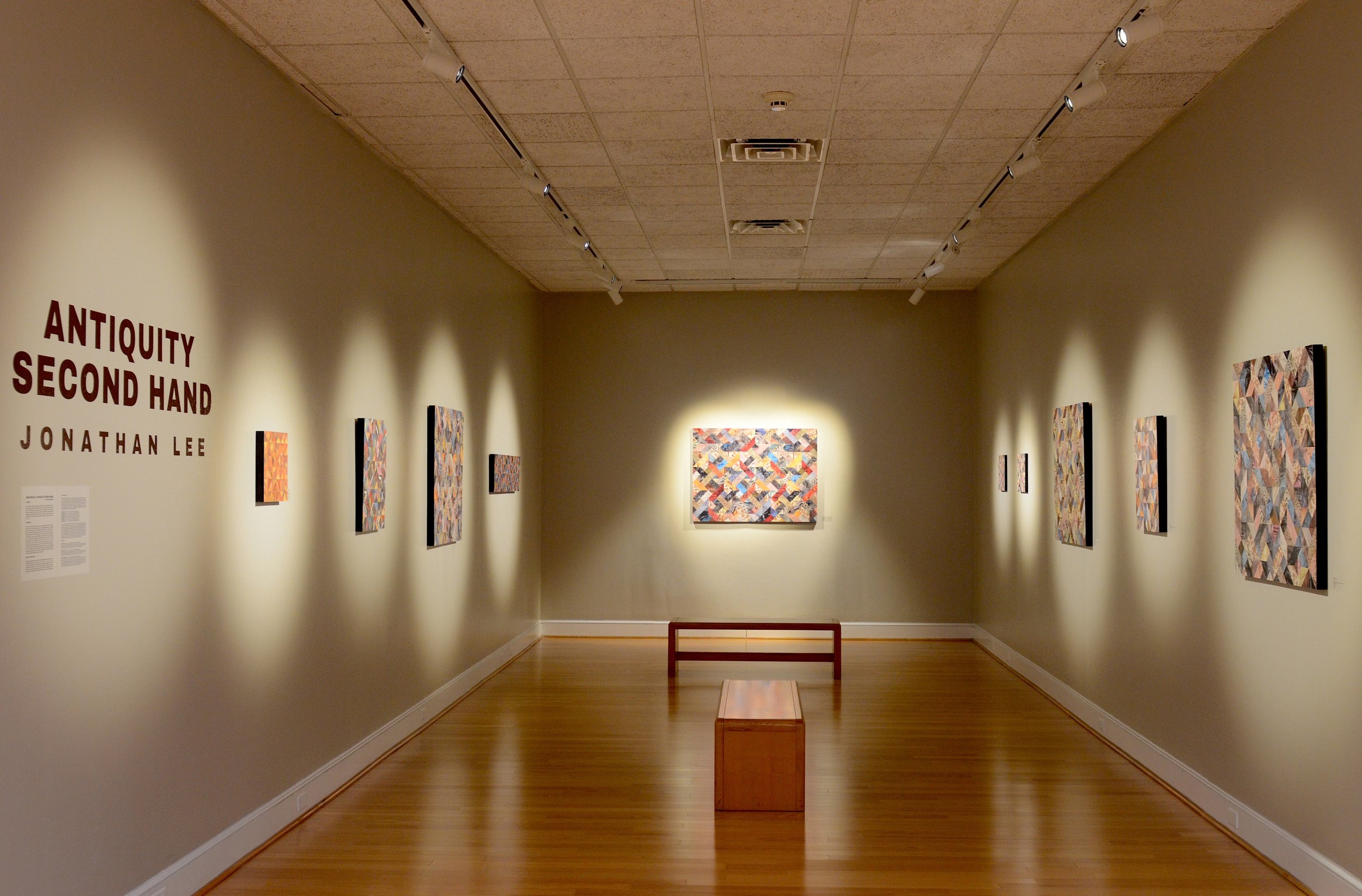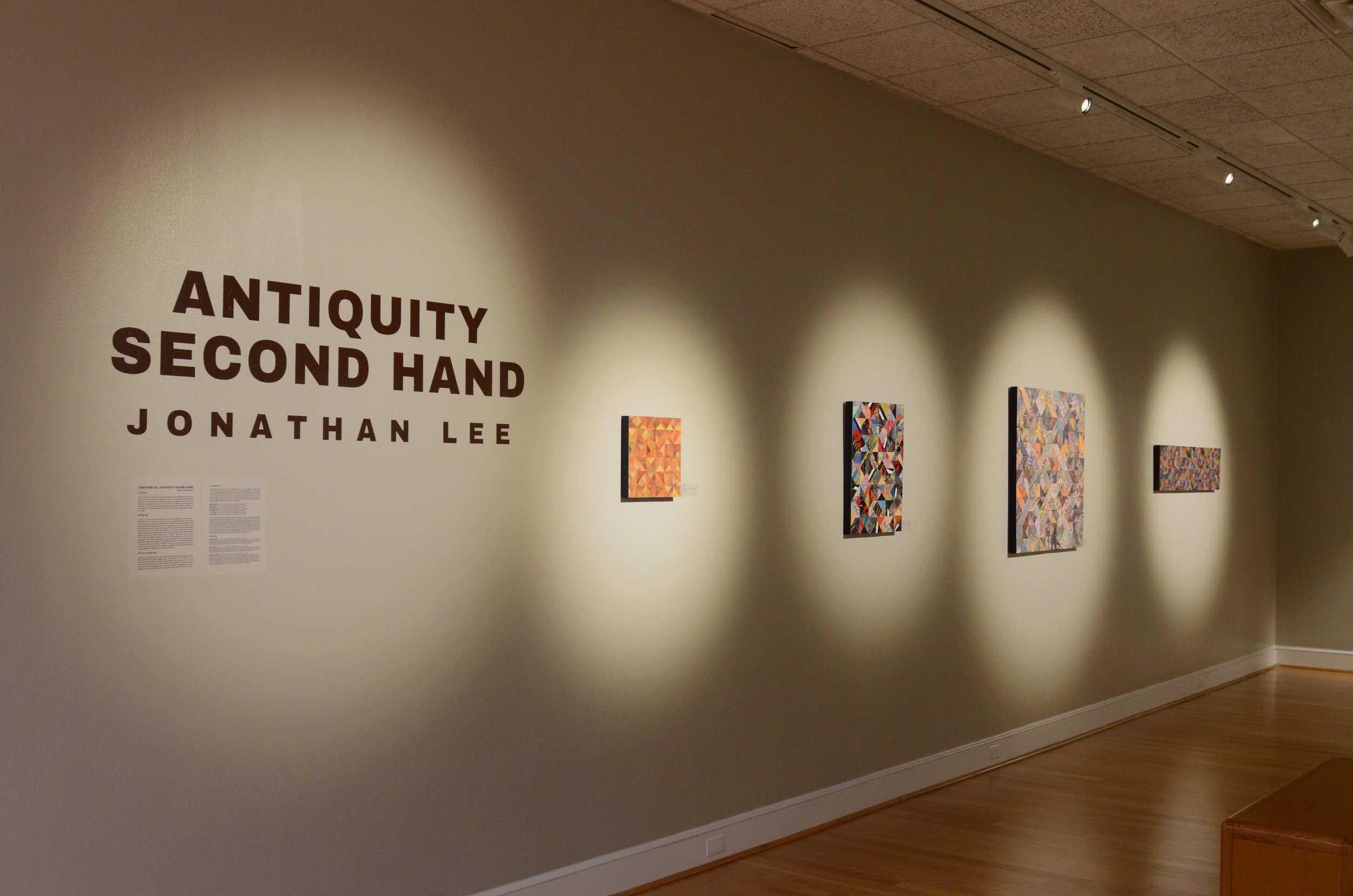ANTIQUITY SECOND HAND January 27 - March 16, 2024 at Piedmont Arts
Time, and truth, has felt eroded, abstracted by the events of the last few years. This body of work uses stories from antiquity to reflect on how things both change and remain. The contemporary and historic are always in dialogue with one another. Their role in memory and the exchange of ideas is inescapable. The bittersweet of nostalgia and the longing for something new, interwoven to form the tapestry of our existence. How we remember and respond to the past, in the present, shapes our future.
All Western Civilizations share similar Greco-Roman systemic and ideological roots. What differentiates these empires from one another is what came out of multicultural, intercultural, or cross-cultural contact and exchanges. Gifts from the soul like art, food, fashion, and music have the uncanny ability to tell stories, convey emotions, and connect people across countries, cultures, and languages, even the expanse of time. These gifts provide comfort and reveal truth in the face of power.
Polyonomy (2023) 36” x 48” x 1.5” record covers, pva, and paint on wood panel
The majority who rule desire to preserve, if not grow, their power, wealth, and influence for generations to come. That’s why many pass their names on to their kin and attach it to anything they can. Naming is an exercise of power. During the High Empire, the Roman aristocracy adopted multiple names, both allowing them to show off their ancestry and lay claim to future inheritances. They became polyonymous; using a myriad of names to represent a single person. The more names, the greater one’s power. But men are mortal. Dynasties end and empires fall. Ideas. Traditions. Deities. They, however, carry on as long as someone, anyone, still remembers or believes. So, for practical, cultural, and political reasons, polyonomy was also applied to the gods. Few had more names than Diana.
BACKGROUND: In 2019, I started collecting cheap, free, or discarded albums from record shops, thrift stores, and yard sales, turning them into triangular fragments and sorting them by color and content. Of everything he collected, he was most drawn to the pieces that featured flowing, patterned, or bunched fabrics from the 60s, 70s, and 80s, separated from the bodies they adored. Then came the pandemic, followed by the election, civil unrest, general instability, and a greater fear of the unknown. Early on, slowed by the weight of it all, I found listening to The Supremes while getting started in the studio helped alter his mindset. Diana Ross’ voice, a warm mix of sad and hopeful, ended up an ideal muse, especially since many of the fragments came from her solo albums. As he worked, he found the combinations were wild, earthy, and intertwined, invoking the huntress. Diana. Roman goddess of the hunt, wilderness, fertility, childbirth, and more. A truly powerful polymorph whose story and character are so complex, so ingrained, that she just kept evolving through neopagan religions and into the modern day.
Artemis (2021) 36” x 36” x 1.5” record covers, pva, and paint on wood panel
Diana (2020) 36” x 36” x 1.5” record covers, pva, and paint on wood panel
Trivia (2021) 36” x 36” x 1.5” record covers, pva, and paint on wood panel
There’s a lot of strength and vulnerability in these pieces, full of the same complexity personified by their namesakes and the cultures that preserved them. They’re fluid, continuously transforming through variations in color and pattern. Each piece presents a unique character, even though they were built from similar pieces. First came Diana, followed by Artemis, Diana’s Greek equivalent and predecessor. She was the favorite goddess of Greece’s rural populace, so the materials are less flamboyant and more rustic. Trivia, an early epithet for Diana, was the guardian of the crossroads; a triple goddess combining Hecate, Selene, and Diana - the underworld, moon, and hunt. Thus, the piece is dark and fixed to a single unified layer.
Luna (2021) 12” x 12” x 0.5” record covers, pva, and paint on wood panel
Luna and Lucina are lesser used names with more fragile connections, so their smaller proportions are appropriate.
Actaeon (2022) 12” x 12” x 1.5” record covers, pva, and paint on wood panels
Made from multiple copies of Dionne by Dionne Warwick, the fur and sharp angles reflect the story of Actaeon, a hunter who saw Artemis nude while bathing in the woods. As punishment, she transformed him into a deer and had his own dogs hunt him down and tear him apart. A far more severe punishment than that of Siproites.
Lucina (2021) 12” x 12” x 0.5” record covers, pva, and paint on wood panel
Artume (2023) 24” x 18” x 1.5” record covers, pva, and paint on wood panel
Artume was an Etruscan goddess absorbed and replaced by Artemis, who was later absorbed and replaced herself by Diana. This piece, like Trivia, is a single unified layer.
Siproites (2022) 12” x 48” x 1.5” record covers, pva, and paint on wood panel
This piece was inspired by the story of Siproites, the Cretan boy who was transformed into a woman after seeing the goddess Artemis nude while bathing in the woods. Made from covers featuring nature, plaid, and denim, the work reveals no gender through its scenery or cloth, just ‘rustic beauty’ and a sense of transformation.
Persephone (2019) 24” x 18” x 1.5” record covers, pva, and paint on wood panel
This piece was made well before the conception of this exhibition. It appears bright and fun on the surface, but if you look closer, there's something sinister lurking: the gaze and ill intent of a predator. In Greek mythology, Persephone, goddess of Spring, was abducted, raped, and held captive by Hades, god of the underworld and brother of her father Zeus. She would forever be bound to Hades, allowed only to return to the earth in spring to bring fertility, growth, and prosperity. Her return to the underworld marked the dying down of plants, the halting of growth, and the start of winter. The pattern reflects this movement.
All photography by Shaun Aigner-Lee













